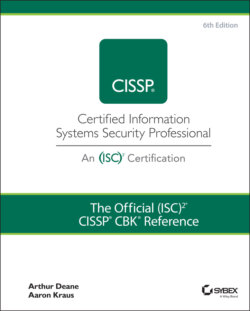Читать книгу The Official (ISC)2 CISSP CBK Reference - Leslie Fife, Aaron Kraus - Страница 115
Termination
ОглавлениеTaking appropriate care when people depart an organization is just as important as ensuring they are properly brought into the organization. Terminations may be voluntary (i.e., an employee retires or finds a new job) or involuntary (i.e., an employee is fired, furloughed, or otherwise “let go”). These former insiders represent a risk to the organization, and appropriate actions must be taken to ensure they do not compromise the operations, intellectual property, or sensitive information with which they have been entrusted.
When an individual leaves an organization on good terms, it is relatively easy to go through the standard checklist: suspending electronic access, recovering their access badges and equipment, accounting for their keys, and changing the key codes on cipher locks that the departing employee used are among many other standard practices. Most organizations have well-structured off-boarding processes to ensure the removal of access when an individual is no longer entitled to organizational information or resources.
Involuntary termination of employment is an emotionally charged event for all involved. In virtually all cases, an involuntary termination forces the employer to assume the terminated individual is a threat to the organization, and appropriate action should be taken to protect organizational assets. Termination procedures at most organizations include specific processes to notify the information security organization to disable access to electronic and physical systems.
Where possible, recovery of property that an involuntarily terminated employee used should be attempted. Where appropriate, the recovered material should be tracked as evidence and retained for subsequent forensic analysis. Finally, once the individual has left the organization, remaining staff should be informed that the terminated individual is no longer allowed access and that any attempts by that individual to access resources or property should be reported.
TIP It is not unusual for individuals to have taken steps to harm the organization in the event that they were terminated. The most obvious forms of this are the theft of data by the terminated individual, who hopes to sell back the key to the organization (i.e., ransomware), use the information to begin or join a competing organization, or disclose the information to discredit the organization. Strong data security practices and a well-developed insider threat program are essential in defeating malicious activities by terminated employees. User and Entity Behavior Analytics (UEBA), for example, can help detect a disgruntled employee who is heading toward a rage quit.
